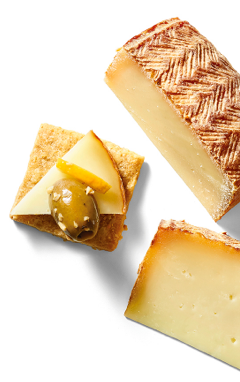At their best, pears are super sweet, juicy and perfectly tender. (In the case of Asian pears — they’re amazingly crisp.) Fall’s and winter’s peak-season pears are delicate and grown in exacting conditions, mostly in California and the Pacific Northwest. Pears are harvested from their trees when they’re mature, but they still take some time to ripen after they’re picked.
Exclusively for Prime members in select ZIP codes.
How to Pick a Perfectly Ripe Pear
Since pears don’t always change color as they ripen, a good rule of thumb to follow is to check out the neck of the pear, near the stem. If the neck is tender, it’s likely ripe and ready to eat. If the neck is firm, let it ripen at room temperature for a few days on your kitchen counter.
Our Favorite Pear Varieties
Here are some varieties of pears that you’ll find in our stores:

Comice
Known for its mellow sweetness and uniquely smooth, buttery texture. They resemble Bartlett pears, but you’ll sometimes spot them with a blush-red patch. Keep these on hand for amazing cheese plates.
Try the Queen of Pears in: Spinach Salad with Pears and Walnuts

Bartlett
Sweet, juicy and aromatic, with great flavor and a soft, slightly coarse texture when ripe. Varieties are green and red. Green varieties will turn slightly yellow as they ripen. Great for canning, dicing into grain salads and snacking.
Try it out in: Mixed Greens with Pears, Hazelnuts and Blue Cheese

D’Anjou
These firm pears will store well and will hold their shape in recipes. The color of this pear won’t change as it ripens, but it will soften from the stem-side down. Try roasting them, slicing them into green salads and topping oatmeal.
Experience D’Anjou delight in: Apple, Pear and Cucumber Salad

Bosc
A standout in shape, color and texture. Greenish-yellow with a hint of light brown, these pears are firm, honey-sweet and slightly dense. They’re great for baking in crisps, pies and tarts — a favorite for poaching.

Concorde
With an exceptionally long neck and an exquisite vanilla flavor, the Concorde has a dense flesh that is sweet at multiple stages of its ripening process. Because it’s so sturdy, it’s ideal for grilling, roasting or sautéing.

Asian
These yellow-green to speckled pale-yellow pears are one of the oldest cultivated tree fruits and are really a bridge between apples and pears. They’re a great combination of the juiciness of pears with the crisp crunchiness of apples and make perfect snacks as they are.
How to Store and Ripen Pears
Store ripe pears in the refrigerator to slow ripening and remember to sprinkle some lemon juice on your pears after you cut them — this enhances the flavor and helps prevent the fruit from turning brown. If your pears need some love in the ripening department, place them in a brown paper bag to help speed up the ripening process (and throw a banana in the bag for extra ethylene gas that fruit naturally emits!).










